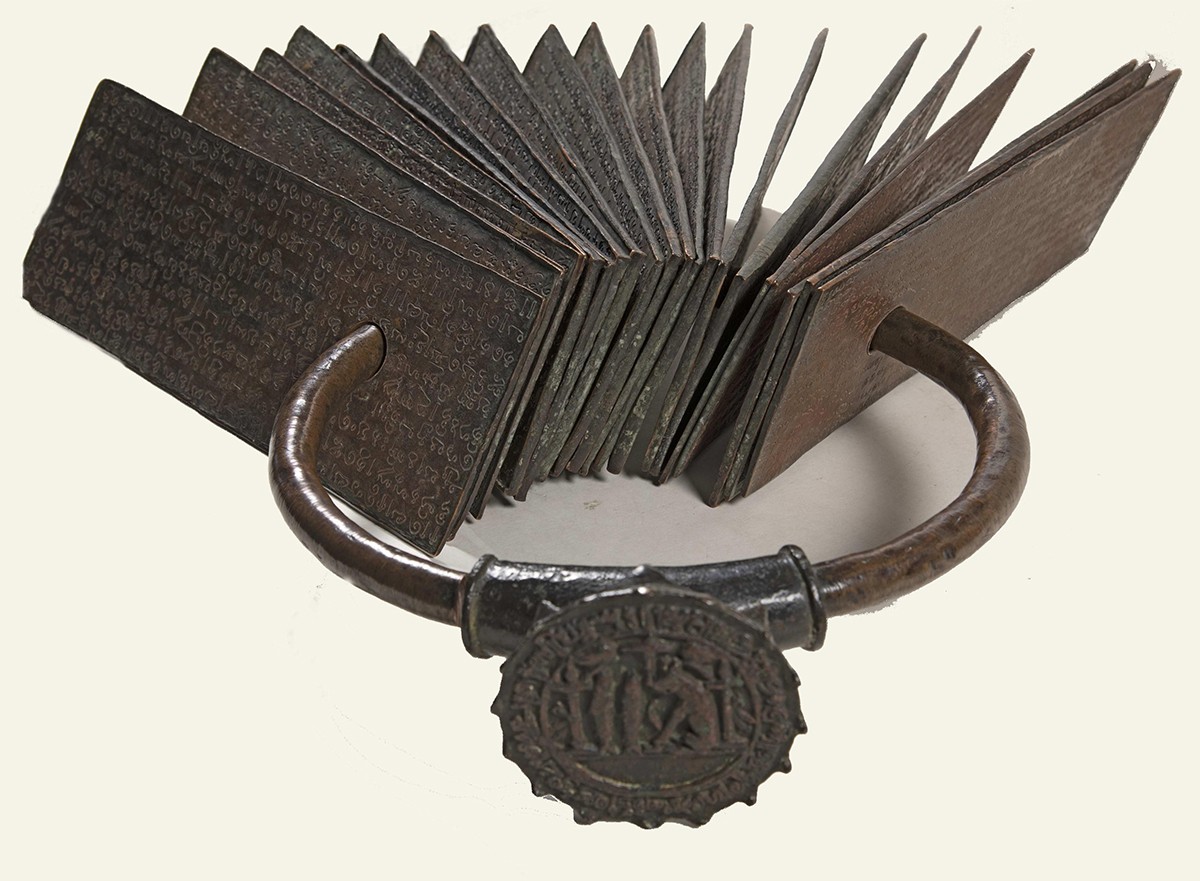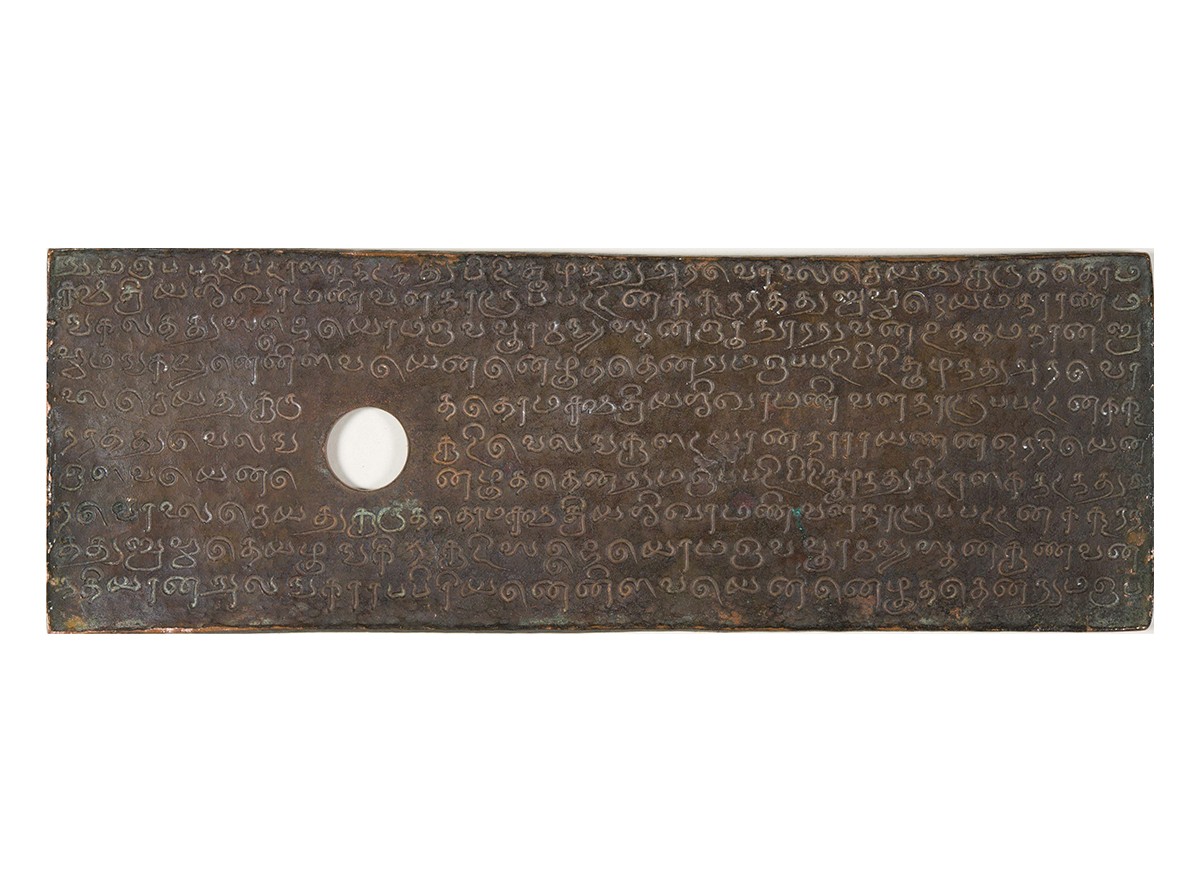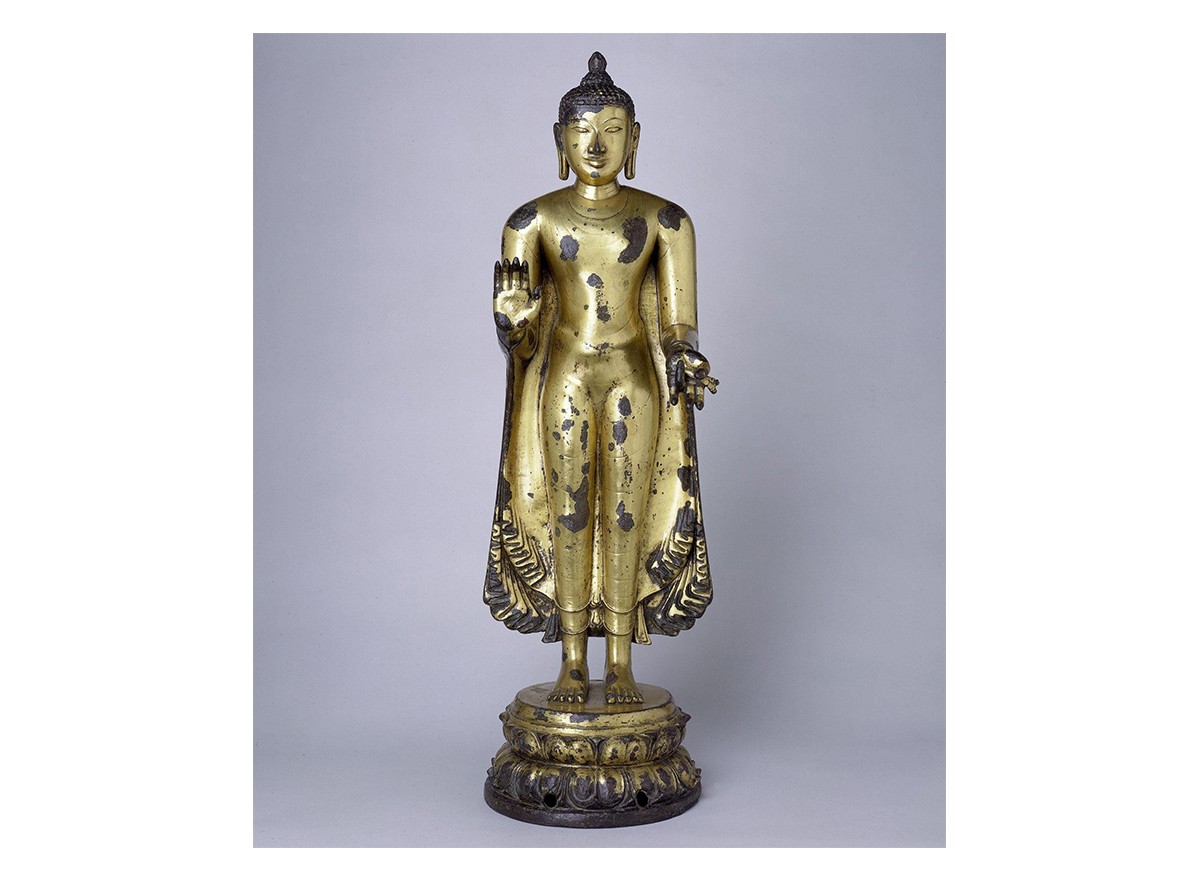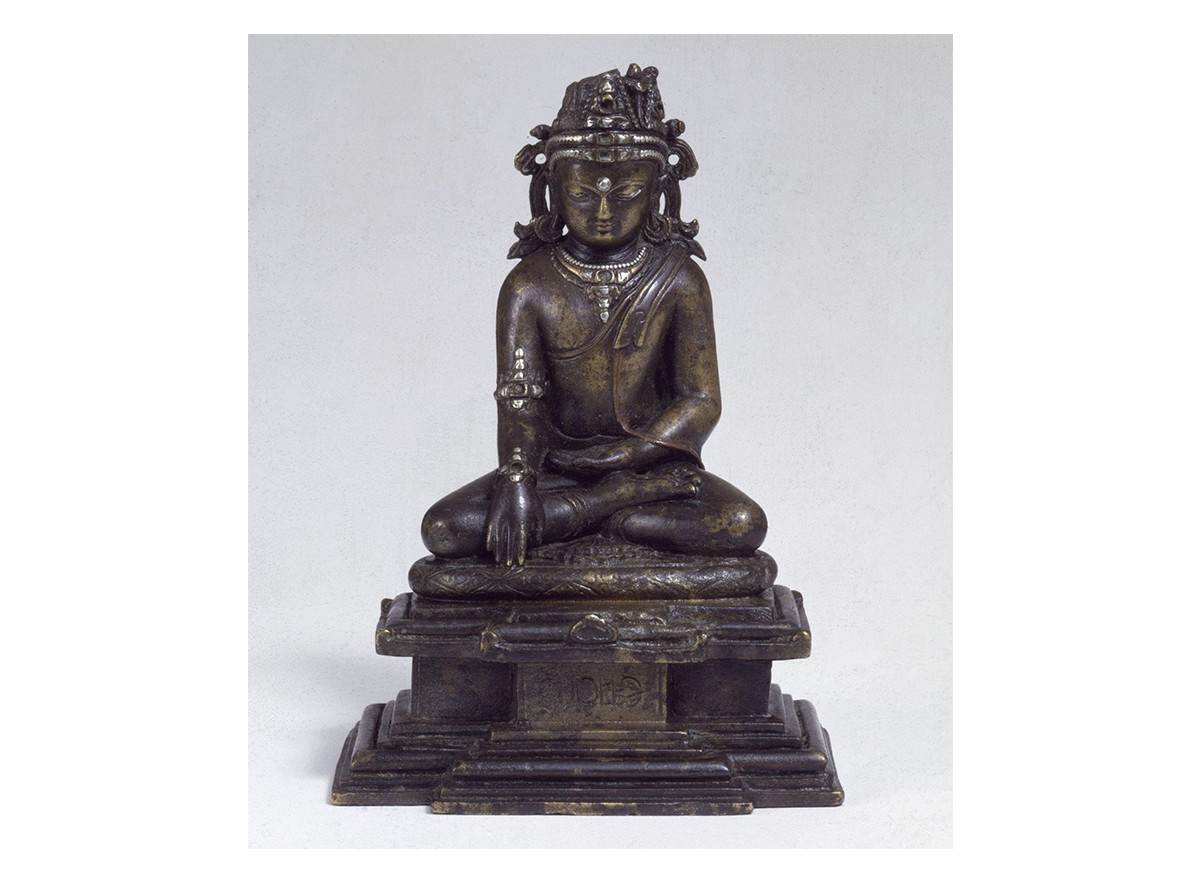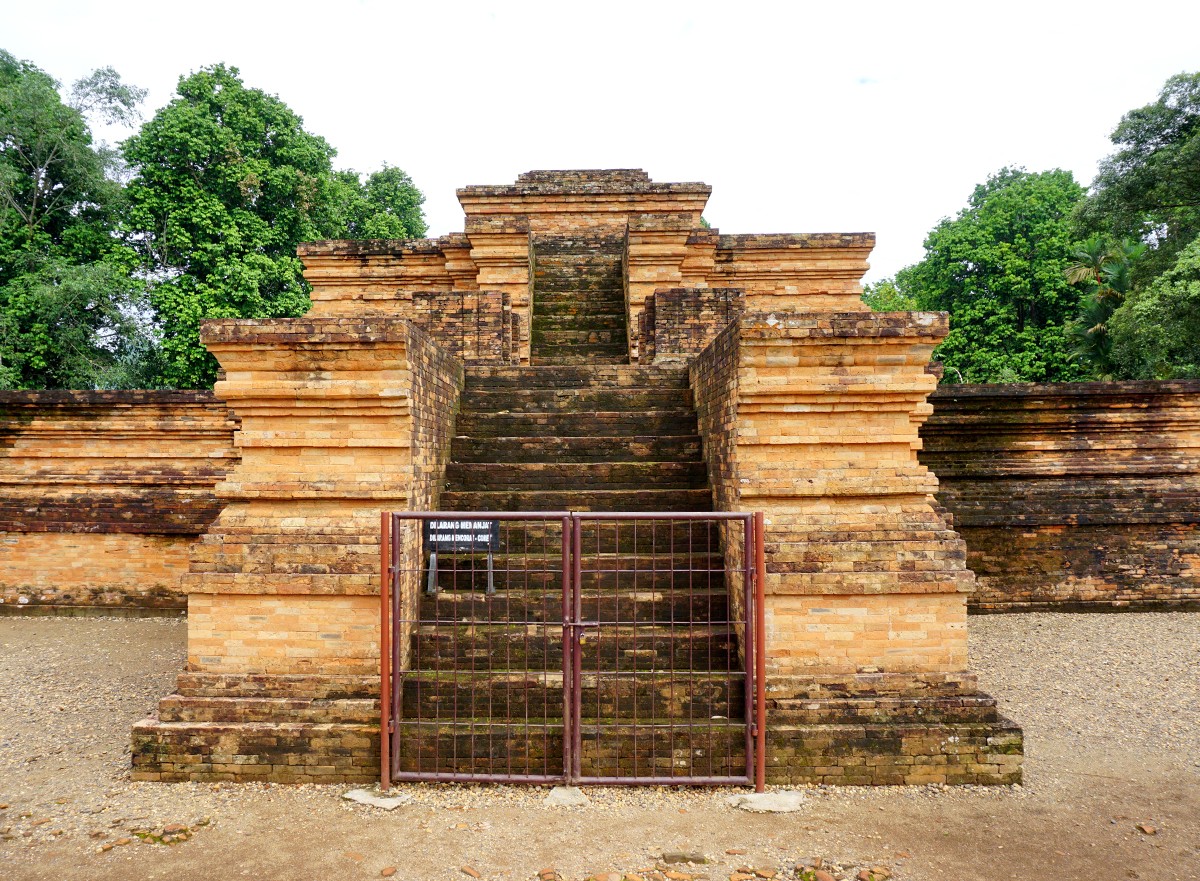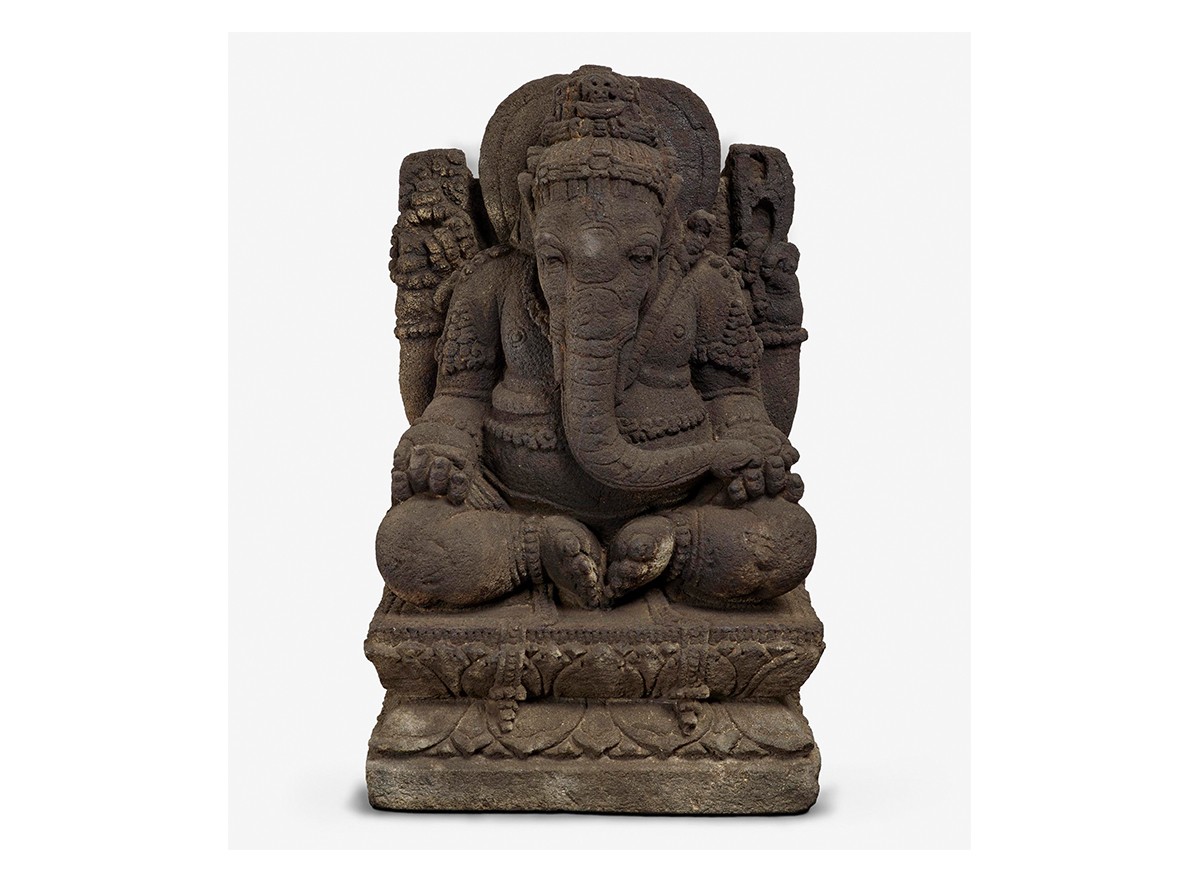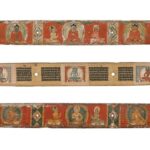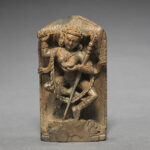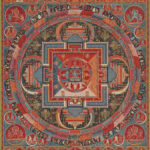Contact with Southeast Asia Increases
1025
By the eleventh century, maritime trade routes between South and Southeast Asia on the Indian Ocean increase, resulting in the movement of large numbers of manuscripts as well as monks, merchants and artisans. China also emerges as an important market, facilitating the demand for porcelain, spices, silk, cotton textiles and other goods. Notable examples of a rising competition between Indian Ocean powers include the Chola raids of the Srivijaya confederacy in Malaya and Sumatra in 1025 CE.
Diplomatic relations also flourish in the region, encouraging artistic and cultural exchange; this often involves ‘religious diplomacy’, particularly with Southeast Asian kings making endowments to trade and monastic centres such as Nalanda (in present-day Bihar, India) and the Chudamani Vihara in Nagapattinam (in present-day Tamil Nadu, India). Indian cotton textiles and technology spread through much of Indonesia. Shaivite and Buddhist iconography and knowledge circulates between these regions; Buddhist monks from India often study abroad in centres in present-day Sumatra and Java.
Bibliography
Kulke, Hermann. “Srivijaya Revisited: Reflections on State Formation of a Southeast Asian Thalassocracy.” Bulletin de l’École Française d’Extrême-Orient 102 (2016): 45–96. http://www.jstor.org/stable/26435122.
Appadurai, K. “Trade and Commerce under the Imperial Cholas.” Journal of Emerging Technologies and Innovative Research 6, no. 6 (June 2019): 355–63.
Feedback 
This entry appears in
Art in South Asia
Visit Timeline
Associated Timeline Events
First Published: March 11, 2024
Last Updated: August 5, 2024




